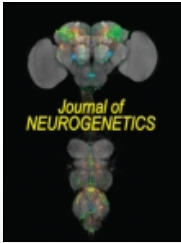The Irre Cell Recognition Module (IRM) Proteins
Karl-Friedrich Fischbach, Gerit Arne Linneweber, Till Felix Malte Andlauer, Alexander Hertenstein, Bernhard Bonengel, Kokil Chaudhary – 2009
One of the most challenging problems in developmental neurosciences is to understand the establishment and maintenance of specific membrane contacts between axonal, dendritic, and glial processes in the neuropils, which eventually secure neuronal connectivity. However, underlying cell recognition events are pivotal in other tissues as well. This brief review focuses on the pleiotropic functions of a small, evolutionarily conserved group of proteins of the immunoglobulin superfamily involved in cell recognition. In Drosophila, this protein family comprises Irregular chiasm C/Roughest (IrreC/Rst), Kin of irre (Kirre), and their interacting protein partners, Sticks and stones (SNS) and Hibris (Hbs). For simplicity, we propose to name this ensemble of proteins the irre cell recognition module (IRM) after the first identified member of this family. Here, we summarize evidence that the IRM proteins function together in various cellular interactions, including myoblast fusion, cell sorting, axonal pathfinding, and target recognition in the optic neuropils of Drosophila. Understanding IRM protein function will help to unravel the epigenetic rules by which the intricate neurite networks in sensory neuropils are formed.
@article{doi:10.1080/01677060802471668,
author = {Karl-Friedrich Fischbach and Gerit Arne Linneweber and Till Felix Malte Andlauer and Alexander Hertenstein and Bernhard Bonengel and Kokil Chaudhary},
title = {The Irre Cell Recognition Module (IRM) Proteins},
journal = {Journal of Neurogenetics},
volume = {23},
number = {1-2},
pages = {48-67},
year = {2009},
publisher = {Taylor & Francis},
doi = {10.1080/01677060802471668},
URL = {
https://doi.org/10.1080/01677060802471668
},
eprint = {
https://doi.org/10.1080/01677060802471668
}
}

